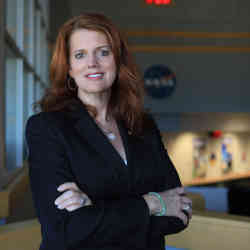
It has been nearly 50 years since U.S. National Aeronautics and Space Administration (NASA) Commander Eugene Cernan and crewmate Harrison H. (Jack) Schmitt completed Apollo 17's lunar exploration mission and left the Moon's surface behind in December 1972. While NASA has continued to explore space, via Skylab in the early 1970s, the Space Shuttle program that operated between the late 1970s and 2011, and through ongoing activity at the International Space Station, there has always been a strong desire for American astronauts to return to the Moon.
NASA is in the process of commercializing low earth orbit (LEO) activities, enlisting private industry to help address both the financial and technological challenges of space exploration. The goal is to develop the infrastructure and systems required to facilitate sending astronauts back to the moon by 2024, as part of NASA's Artemis program. NASA has tapped commercial industry partners to develop, test, and deliver a Space Launch System (SLS) rocket, the Orion spacecraft to carrying the astronauts, and the Human Landing System (HLS), which will be used to take the crew from orbit to the surface of the Moon.
Despite more than 60 years of experience, sending these rockets and their payloads into space safely remains a complex, critical task. NASA's Exploration Ground Systems (EGS) Program, which includes nearly 100 NASA personnel segmented into teams, is responsible for the integration of the flight elements, as well as the test and launch of the Artemis missions. Serving as Launch Director for EGS is Charlie Blackwell-Thompson, who is responsible for overseeing the countdown and liftoff of the SLS and Orion spacecraft.
Blackwell-Thompson is the first woman to hold the position of launch director at NASA; she was named to this position in 2016. She had previously served as assistant launch director during the Space Shuttle program, as well as lead electrical engineer for Hubble Space Telescope servicing missions.
She credits several teachers she had in high school and college for introducing her to the possibilities of a career based in a STEM (science, technology, engineering, and mathematics) field, but one high school teacher in particular had posed the question to Blackwell-Thompson about what wanted to study when she went off to college. "He said, 'if you decide to study engineering, I think the possibilities are endless – you could really do anything with that degree, and it will build such a great foundation for you'." Blackwell-Thompson says she heeded that advice and decided to attend Clemson University, where she majored in computer engineering.
It was at Clemson that she took a software engineering class, which contained a module that focused on software testing. T he iterative and methodical nature of software testing helped forge a path to her eventual hiring at NASA as a software testing engineer.
"It was that class that made me think about [software engineering] as a career field," Blackwell-Thompson says. "You see if [the software] meets the requirements, and the testing is done in a very iterative process. That appealed to me, [because] I was never someone who wanted to write a lot of code."
Indeed, a key skill used in computer science, engineering, and other technical disciplines is the ability to break down, analyze, and approach problem-solving in a stepwise, methodical manner. Blackwell-Thompson says her coursework in computer engineering helped her develop that skillset, which can be applied to software problems, electrical problems, or entire system problems.
"Studying in STEM or in engineering gives you that really solid base of working through a problem," Blackwell-Thompson says. "Whether it was software engineering or any number of the other courses that I took as part of my computer engineering degree, I learned how to solve problems, how to take what you know and apply it to the situation, and how to move methodically, solving the problem until resolution."
In addition to the technical skills required to meet these challenges, the ability to work well with others is just as important to success at NASA, she says. "Team-building is hugely important in what we do at NASA," Blackwell-Thompson says. "Launch isn't done by one person; launch is done by a team of people working together collaboratively. Everybody has their own role and responsibility, but it all has to come together, so being a part of a team is a key element."
Success for Blackwell-Thompson was driven her ability to work well as a team member and, eventually, to lead teams effectively, while also working hard to master critical technology and technical skills that are typically taught in computer science, chemistry, technology, science, advanced mathematics, and engineering programs, across secondary, post-secondary, and graduate-level programs.
"It all starts with that technical foundation, and for me, that technical foundation was in that computer engineering degree," Blackwell-Thompson says. "Dream big, but you gotta be willing to put the work that comes with that dream because, you know, there's a saying out there, right? A dream plus hard work is a plan."
Keith Kirkpatrick is principal of 4K Research & Consulting, LLC, based in New York, NY, USA.



Join the Discussion (0)
Become a Member or Sign In to Post a Comment